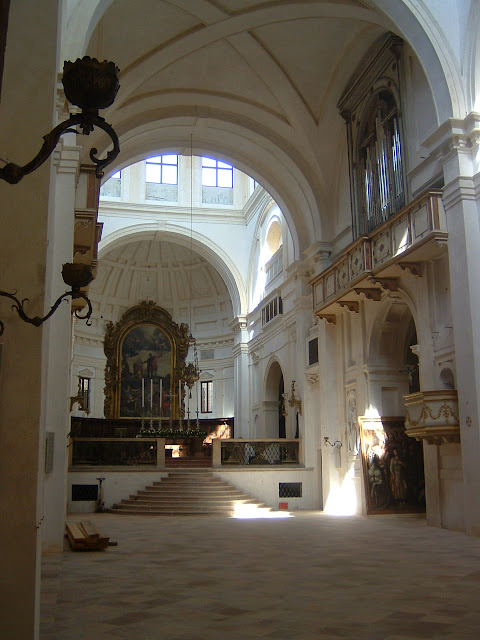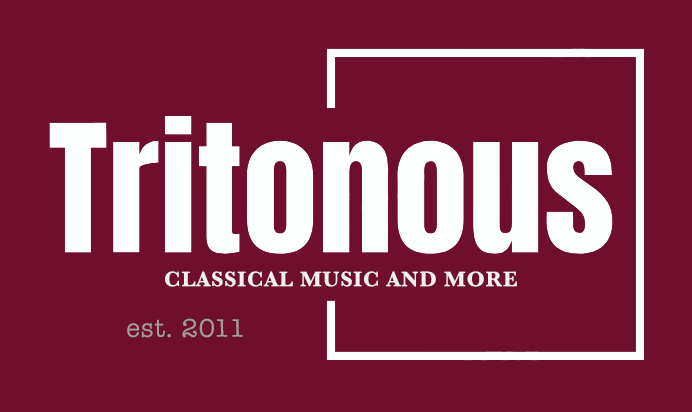 |
| Basilica of Santa Barbara at the Palazzo Ducale in Mantua where Monteverdi was working when he wrote his Vespers of 1610 |
Monteverdi: Vespers of 1610; The Sixteen, Harry Christophers; Temple Music Foundation at Temple Church
Reviewed 8 October 2024
Technically assured and finely expressive performance that filled the Temple Church with extraordinary richness from bravura moments to intimate magic
There is something rather tantalising about Monteverdi’s Vespers of 1610, so many questions. We tend to view it in the light of Monteverdi’s subsequent appointment to St Mark’s in Venice, but if we think about Monteverdi at the time of writing it (working in Mantua, keen to leave and with an eye on a job in Rome) it is less clear where it was written for. The work is full of questions like that, and prime amongst those of course is whether it is a ‘work’ at all. But what we cannot question is the extraordinary richness of the music, and all those questions mean that each music director is free to take their own view of the work, make their own decisions.
At Temple Church on 8 October 2024, Temple Music Foundation presented Harry Christophers and The Sixteen in Monteverdi’s Vespers of 1610. Christophers took a large-scale, choral view of the work so we had a choir of 20 plus and instrumental ensemble of 18 with soloists Katy Hill and Charlotte Mobbs (soprano), Jeremy Budd and Mark Dobell (tenor), Ben Davies and Eamonn Dougan (bass) stepping out from the choir, though this should not disguise the extraordinary quality of the individual soloists.
Using full choir to perform the large-scale psalm settings in the work means that you need technically adept choral singers, and The Sixteen had that in spades. This was one of those performances where you never needed to worry about the significant technical difficulties, all was superbly realised, even to the Magnificat which was performed at the high pitch (another one of those questions).
The opening psalm, Deus in adjutorium displayed terrific strong choral sound during the toccata (yet another question, why re-use this from L’Orfeo), rather a wall of sound with chorus slightly predominating. This was not a performance where the singers were almost part of the instrumental ensemble. Throughout, the chorus combined smoothness of tone with lovely sprung rhythms and often great emphasis. The flurries of ornamentation were clearly no impediment and the psalms had a great sense of impetus, giving us some virtuoso choral singing indeed. In some, such as Nisi dominus there were positive waves of sound rushing round the chorus.
In these larger scale pieces, I enjoyed the way the solos emerged from the larger choral textures, and throughout the performance we had these contrasts in weight, as well as of timbre and tone. This is a work that glories in the sheer variety and Christophers brought this out, particularly the way the instrumental interludes in the psalms had strong individuality and character, and I particularly noted a wonderfully pawky dulcian moment in Laetatus sum.
Mark Dobell sang Nigra Sum from the back of the church, yet his strong direct tone proved communicative wherever you were sitting. Poised and with attention to the words, Dobell combined a sense of rhetoric with a nice use of expressive ornamentation. For Pulchra es, Charlotte Mobbs and Katy Hill came to the front of the instrumental ensemble. The two have matching voices, creating a sense of blend allied to clear focused lines, with perky ornaments and expressive moments in the way they stretched out parts of phrases. Duo Seraphin featured Mark Dobell and Jeremy Budd, later joined by Ben Davies. The speed was quite slow, the two tenors really relishing the moments and they were beautifully balanced with a real sense of care over the detail of the music and matching of tone and ornament. Ben Davies provided fine support as the extra third. Audi coelum featured Jeremy Budd high in the pulpit and Mark Dobell at the rear of the church, again a sense of collegiality, the two matching tone and ornament. Budd gave us a strong sense of rhetoric, never getting bogged down in details in the welter of notes.
Sonata soprano Sancta Maria is really a moment for the instrumental ensemble, with individuals getting to show off. This was full of colour and movement, yet Christophers brought a sense of progressive excitement to the music.
We ended, of course, with the Magnificat in the longer, more elaborate version, at the high pitch which adds the extra frisson of excitement. The cornetts go very high here and the technical security of the playing was admirable, never a hint of will they/won’t they. This final, long movement gives everyone a chance to shine, intriguingly anchored by the running thread of a single choral line, an indicator that Monteverdi probably assumed one singer per part, though more works if finely done, as here. Budd and Dobell gave us vivid excitement in ‘Et exultavit’ and a triumphant ‘Gloria patri’, Davies and Dougan were entirely unphased by the tessitura of ‘Quia fecit’ and made it thrilling in the right way, Mobbs and Hill were bright and intense in their intersecting lines in ‘Suscepit Israel’, violins, cornetts and sackbuts all had their moment in the spotlight, highly coloured and finely played, and everyone clearly enjoyed themselves and brought the house down.
The blog is free, but I’d be delighted if you were to show your appreciation by buying me a coffee.
Elsewhere on this blog
- Une messe imaginaire: Bruckner & Frank Martin from Lyon – record review
- What lies beneath: a brilliant reinvention of Judith Weir’s Blond Eckbert at the heart of ETO’s exploration of German Romanticism – opera review
- A glorious noise: from one to eight choirs in I Fagiolini’s evening of music from 17th-century Venice and Rome – concert review
- After the humans are gone, the instruments still sing and it is important to listen – Jake Heggie on his song cycle, Intonations: Songs from the Violins of Hope – interview
- Innate theatricality: composer Adrian Sutton definitively moves out of the theatre with a challenging yet engaging concerto for violinist Fenella Humphreys – record review
- Eternity In An Hour: Keval Shah and Jess Dandy on their unique reimagining of the Bhagavad Gita – feature
- A focus on the flute: London Handel Players in a group of cantatas Bach wrote in 1724 with virtuoso flute parts – concert review
- A special treat: strong individual performances & superb ensemble in WNO’s revival of Puccini’s Il trittico – opera review
- Embodied sound: Zubin Kanga on his innovative approach to new technology through his interdisciplinary musical programmes – interview
- Compelling performances: Stephen Hough, YL Male Voice Choir, Santtu-Matias Rouvali and the Philharmonia – concert review
- Home








